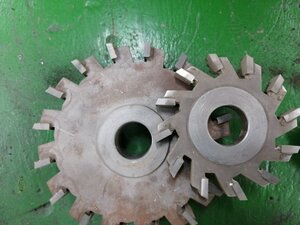Tom Kitta
Ultra Member
So I had in the past few of these and now I got few more and there is a guy on FB that has like 20 more for cheap.
But how do I use horizontal cutters that are missing keyway that transfers power? Side pressure may be enough for a saw but not a carbide tipped 1" 5" diameter cutter. See image. No keyway. What to do? Maybe that is why these don't seem to have any wear.

But how do I use horizontal cutters that are missing keyway that transfers power? Side pressure may be enough for a saw but not a carbide tipped 1" 5" diameter cutter. See image. No keyway. What to do? Maybe that is why these don't seem to have any wear.

